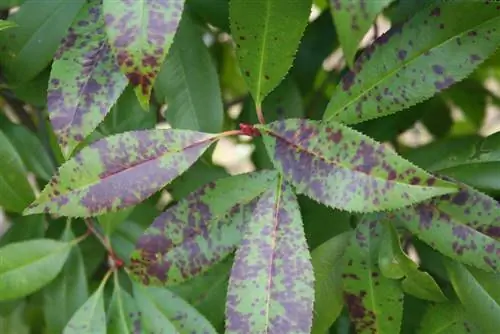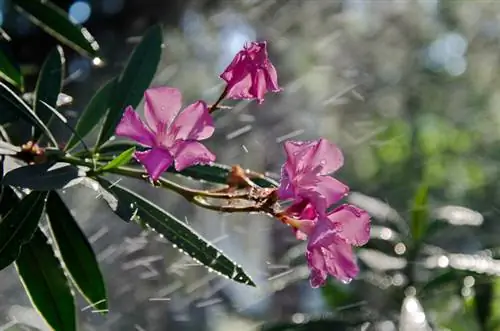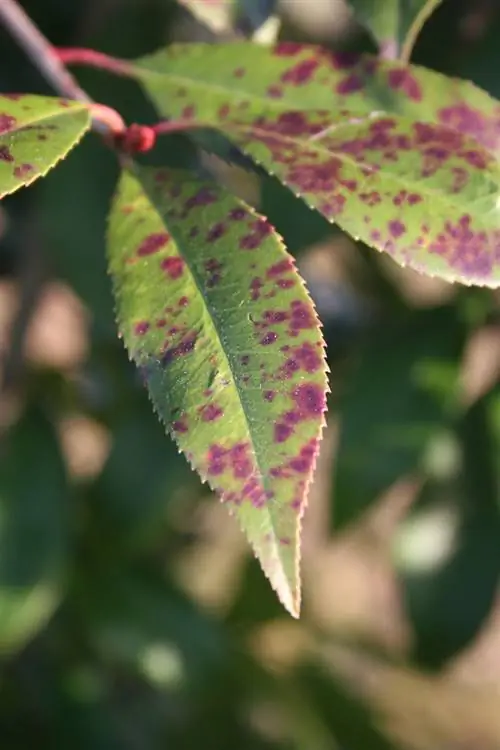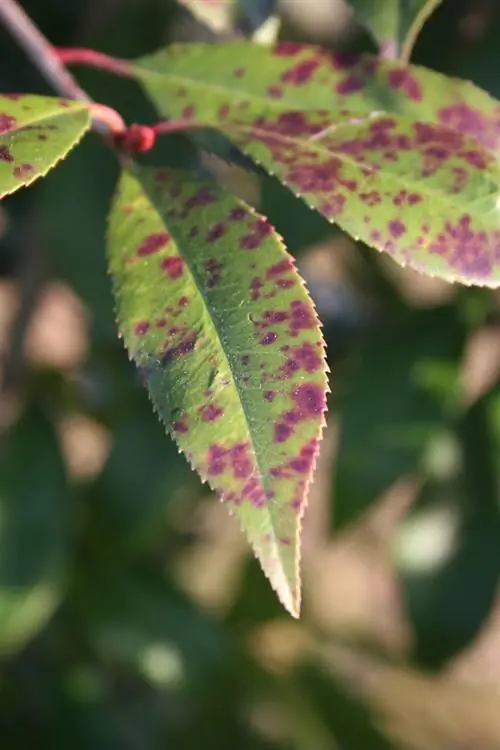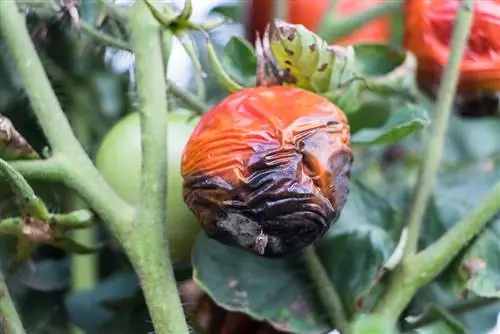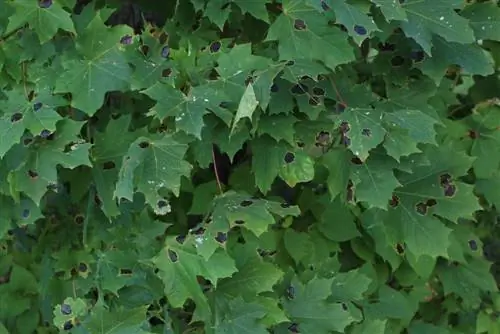- Author admin [email protected].
- Public 2023-12-16 16:46.
- Last modified 2025-01-23 11:21.
If the loquat gets black spots on the leaves, you should get to the bottom of the cause. Both fungi and incorrect care measures can come into question. Proper prevention reduces the risk.
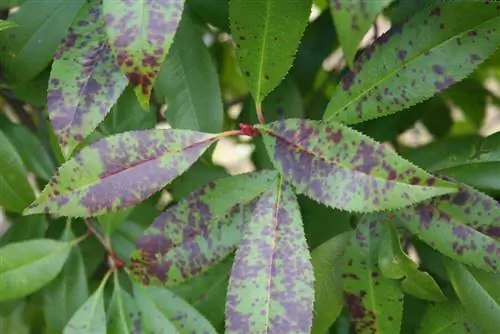
Why does my loquat have black spots?
Black spots on loquat leaves can be caused by fungal diseases such as leaf spot or drought stress. Preventive measures include an optimal location, regular watering, spring fertilization and horsetail decoction to strengthen plants.
Fungal diseases
Various fungi cause diseases that are generally referred to as leaf spot. The spots are often bordered and, in the event of severe fungal infestation, enlarge until they eventually cover the entire leaf surface. If left untreated, the fungal diseases cause the leaves to dry out and die. It is difficult to determine which fungus is specifically responsible for the damage based on the color.
Leaf browning is a common fungal disease that appears on the leaves of loquats. The fungal spores prefer to settle on young leaves, but also on the foliage of weakened and diseased plants. Rain and wind promote their spread. They find ideal growth conditions in a moist environment with warm temperatures. A disease can be recognized by the spots on the leaf surfaces. The spots can appear red, brown or black. If the infestation is severe, the spots spread widely on the leaves.
Drought stress
Patchy discoloration can occur due to unfavorable weather conditions. Drought stress is a possible cause of sudden leaf spots that appear in spring or summer. While the stress reaction in winter is caused by long-lasting ground frosts in combination with direct sunlight, longer heat periods in summer promote the development of spots.
In both situations, a lack of water is the reason for the discoloration. In winter, the roots cannot absorb water in frozen ground. Plants lose fluid when the winter sun shines on the leaves. This fluid deficit occurs in summer if the plants are not watered regularly.
Preventive measures
Look for the perfect location that offers your medlar optimal conditions for growing. An ideal spot offers protection from the direct sun and strong winds. The substrate is loose and well-drained. Loquats must not be placed too close together, otherwise the foliage will not be sufficiently ventilated. As a result, a moist microclimate is created, which provides mushrooms with optimal living conditions.
Strengthen your plants with:
- a decoction of field horsetail
- fertilization in spring
- regular watering

